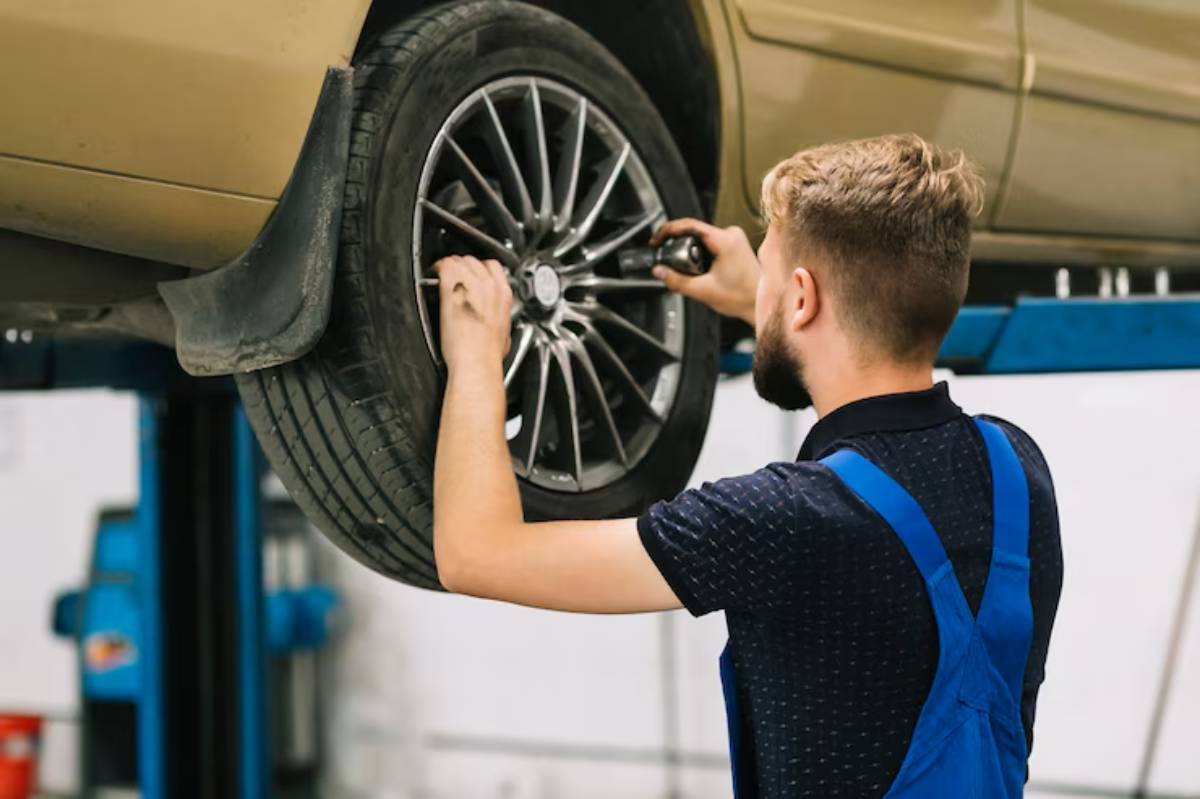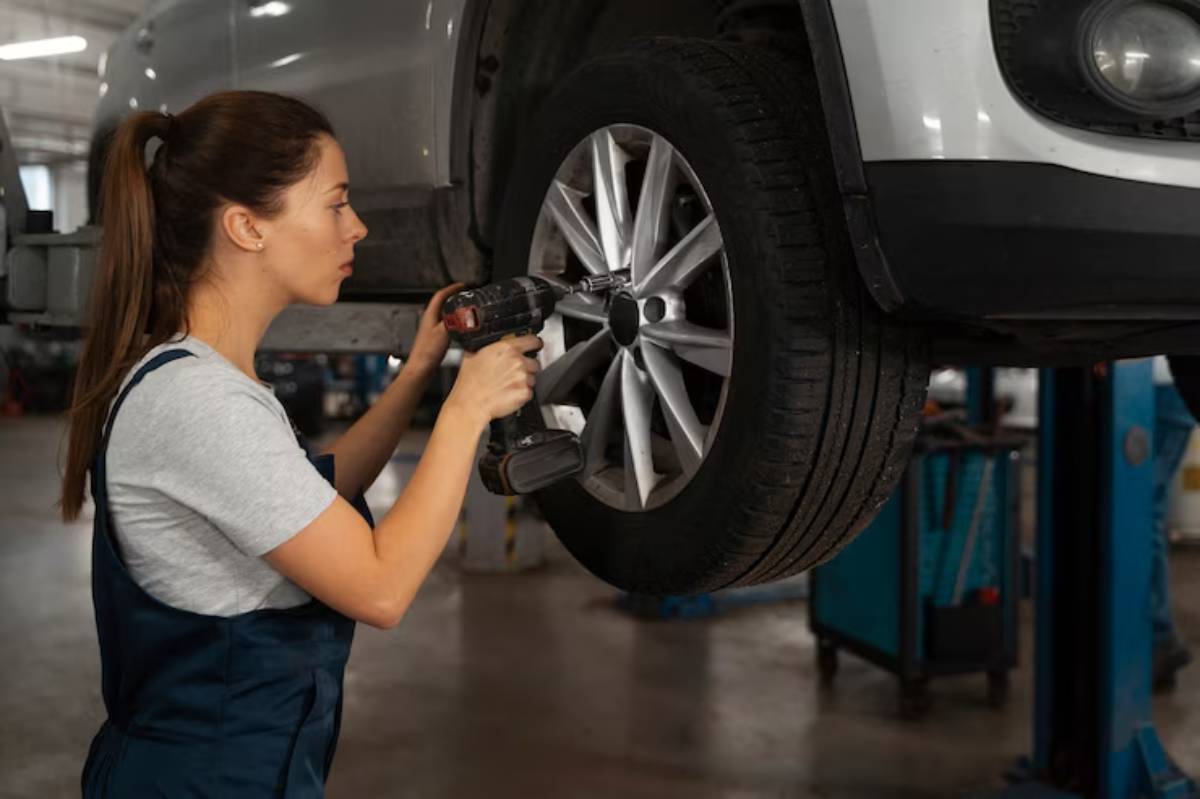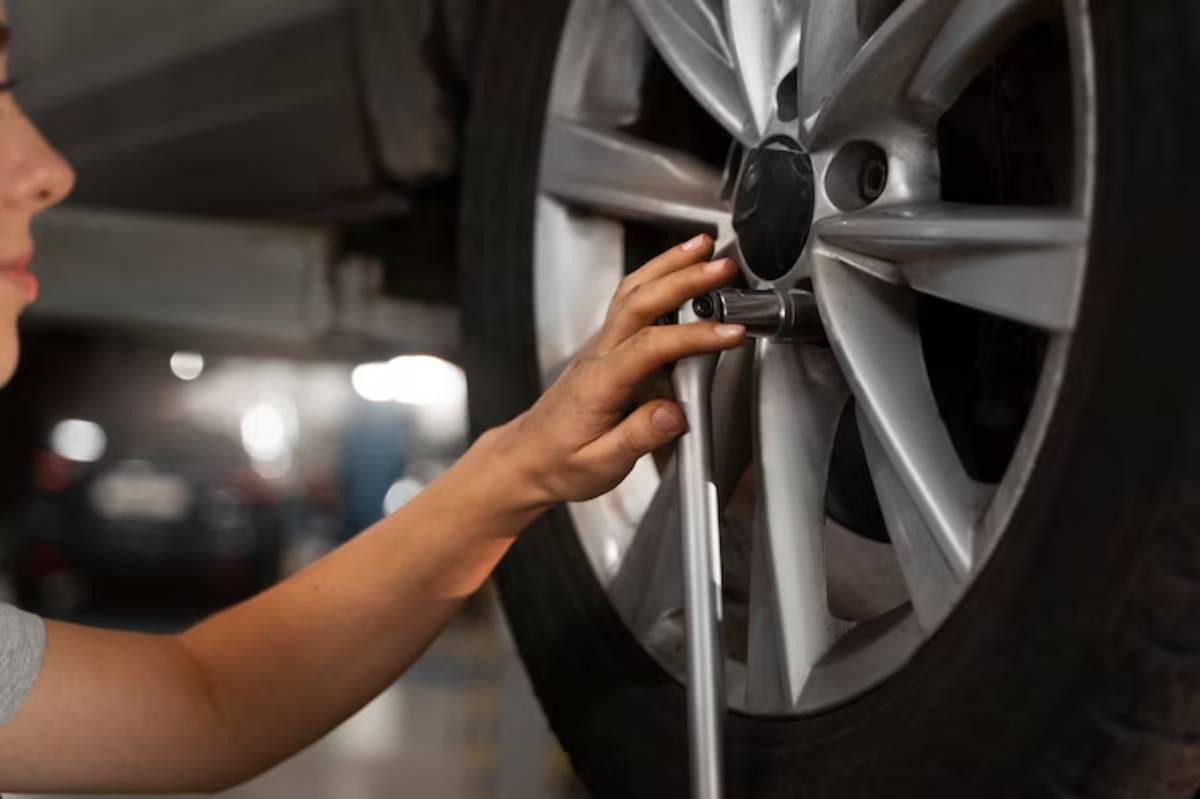
Tyre Rotation Frequency for Hybrid Cars: A Complete Guide
Tyres aren’t the most glamorous part of your hybrid car. They don’t buzz with electricity, manage data, or regenerate braking energy. But when it comes to safety, efficiency, and long-term savings, they’re nothing short of essential. And a surprisingly simple habit — regular tyre rotation — could be the key to getting the best out of them.
If you drive a hybrid, you’ve likely chosen efficiency, longevity, and smooth performance. But here’s something most hybrid owners overlook: tyre wear on hybrids can be uneven, and if left unrotated, it can compromise your vehicle’s handling and fuel economy.
This guide breaks down:
- How often should to rotate tyres on a hybrid
- Why hybrids need slightly different care
- Signs it’s time for a rotation
- Best practices to extend tyre life and efficiency
Let’s roll into the details and help you save money while keeping your hybrid running at its best.
What Is Tyre Rotation, Really?

Tyre rotation means moving tyres from one position on the car to another—typically front to back and vice versa, sometimes crossing sides. Tyres wear unevenly based on their position, and regular rotation spreads that wear more evenly across all four wheels.
Common Rotation Patterns:
- Front-to-rear: The most basic rotation — move front tyres to the rear and rear tyres to the front.
- Cross-pattern: Move front tyres to opposite rear sides (left front → right rear, etc.).
- Directional pattern: Only used when tyres are designed to rotate one way — front goes back, same side.
Hybrid vehicles, depending on their drivetrain (FWD, RWD, or AWD), might have unique wear characteristics that make routine rotation even more critical.
Why Tyre Rotation Matters More in Hybrid Cars
You might assume tyre rotation is no different for hybrids than petrol vehicles — but that’s not quite true. Hybrids come with specific quirks that affect tyre wear patterns:
1. Regenerative Braking Adds Load
Hybrids often use regenerative braking through the front wheels. That extra stopping force wears out the front tyres more quickly.
2. Battery Weight Distribution
Many hybrids have heavy battery packs placed at the rear. Depending on your model, this can skew weight balance and influence how rear tyres wear down compared to the front.
3. Low Rolling Resistance Tyres
Hybrids typically use fuel-efficient tyres designed with less tread and softer compounds. These offer better mileage but tend to wear faster if not rotated.
4. Drivetrain Variations
- Front-wheel drive (FWD) hybrids — e.g., Toyota Prius — wear out front tyres more due to steering and acceleration.
- All-wheel drive (AWD) hybrids — e.g., Lexus RX — require more consistent wear across all four tyres to prevent drivetrain damage.
In essence, regular tyre rotation isn’t optional — it’s a must if you want to extend tyre life and keep performance smooth.
How Often Should You Rotate Tyres on a Hybrid?
General Rule of Thumb:
Every 5,000 to 7,500 miles (roughly every 8,000 to 12,000 km).
This aligns with many service intervals, such as oil changes (yes, even hybrids need those). But your best guide is always your vehicle’s owner manual — some hybrid models have manufacturer-specific recommendations.
Hybrid-Specific Considerations:
- If your hybrid uses regenerative braking, lean towards the lower end of the range (5,000 miles).
- For AWD hybrids, maintain strict rotation intervals to avoid wear-related drivetrain issues.
- Driving habits also matter: city driving with lots of stop-and-go will wear tyres faster than highway cruising.
Signs Your Hybrid Needs a Tyre Rotation
Not everyone tracks mileage perfectly. Here are some tell-tale signs your tyres might be overdue for a rotation:
- Uneven tread wear — especially more wear on front tyres
- The steering pulls to one side
- Increased road noise
- Reduced traction in rain or on wet roads
- Dashboard tyre pressure alerts (TPMS) showing variations between front and rear
If you’re noticing any of these, it’s a good idea to schedule a rotation or at least a tyre inspection.
How Tyre Rotation Extends Tyre Life and Saves Money

Regular rotation helps your tyres wear evenly, which offers three major benefits:
1. Longer Tyre Life
Tyres that wear evenly last longer. That means you’re not replacing your front tyres prematurely while the rears still have life left.
2. Better Fuel Efficiency
Even tread equals better road contact, less rolling resistance, and improved hybrid efficiency.
3. Improved Safety
Rotated tyres maintain consistent grip and performance, crucial for emergency braking or wet road handling.
Should You DIY or Go Pro?
Tyre rotation can be a DIY project if you’re mechanically inclined. However, there are pros and cons.
DIY Tyre Rotation:
Pros:
- Saves money (especially if done with regular maintenance)
- Gives you a chance to inspect brake pads and tyre condition
Cons:
- Requires proper tools: jack stands, torque wrench, etc.
- Risk of improper torque or wheel placement
- Directional and staggered tyres can complicate things
Tip: Always check your tyre type first — directional or asymmetrical tyres have specific mounting rules.
Professional Rotation:
- Often included in hybrid service packages
- Ensures correct torque specs and rotation pattern
- Technicians will also check wheel balance and alignment, both crucial for hybrids
Our recommendation: Rotate tyres professionally every 6,000 miles, or alternate between professional and DIY every other service if you’re confident.
Tyre Rotation vs Alignment vs Balancing: What’s the Difference?
It’s easy to confuse these three, but each serves a different purpose in tyre care.
| Service | What It Does | When Needed |
| Rotation | Moves tyres to different positions | Every 5,000–7,500 miles |
| Alignment | Adjusts wheel angles for proper tracking | If car pulls to one side or after suspension work |
| Balancing | Ensures tyres rotate evenly without wobble | During rotation or if you feel vibrations |
For best results, rotate tyres and check balance and alignment at the same time.
You can explore more on how alignment affects hybrid performance to complete your maintenance routine.
Best Practices to Maximise Hybrid Tyre Life
Here are smart habits to pair with tyre rotation:
- Check tyre pressure monthly: Underinflated tyres increase wear and reduce fuel efficiency.
- Inspect tread depth: Use a 20p coin — if you can see the outer band, it’s time for new tyres.
- Avoid aggressive braking and acceleration: Smooth driving saves tyres and energy.
- Choose high-quality tyres: Look for those labelled low rolling resistance or designed for hybrid/electric vehicles.
If you’re wondering which tyres to choose, don’t miss our detailed guide on best tyres for hybrid car efficiency.
Conclusion: Small Habit, Big Gains

Tyre rotation might seem like a minor maintenance task, but for hybrid owners, it’s a simple yet powerful way to protect your investment.
By rotating your tyres every 5,000 to 7,500 miles, you’re not only extending tyre life but also:
- Boosting fuel economy
- Maintaining smooth, stable performance
- Improving road safety
It’s a small effort with massive returns, especially when done as part of a broader tyre care guide for hybrid cars.
Ready to take control of your hybrid’s performance? Schedule your next tyre rotation or add it to your DIY maintenance checklist. Your tyres, wallet, and the planet will thank you.


